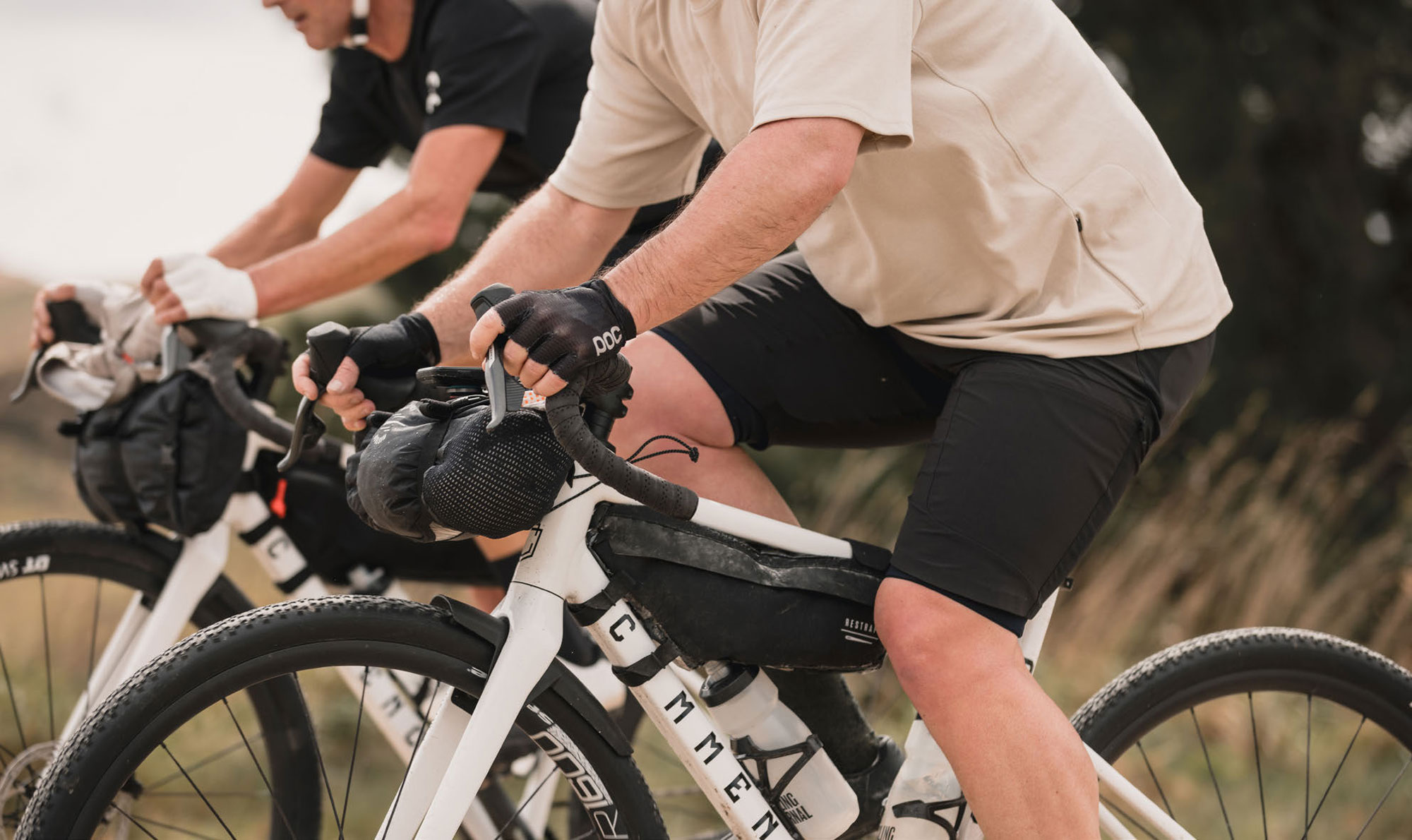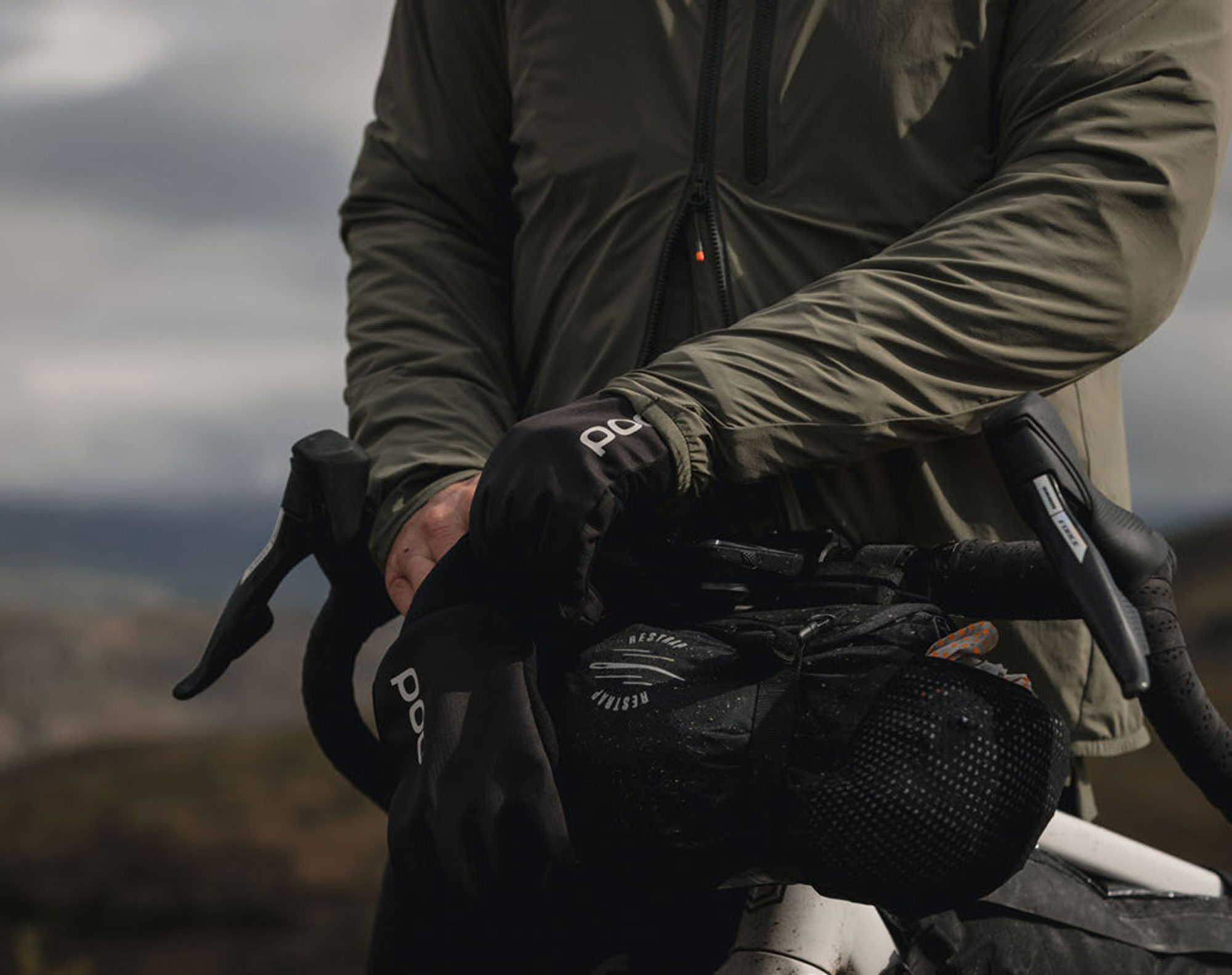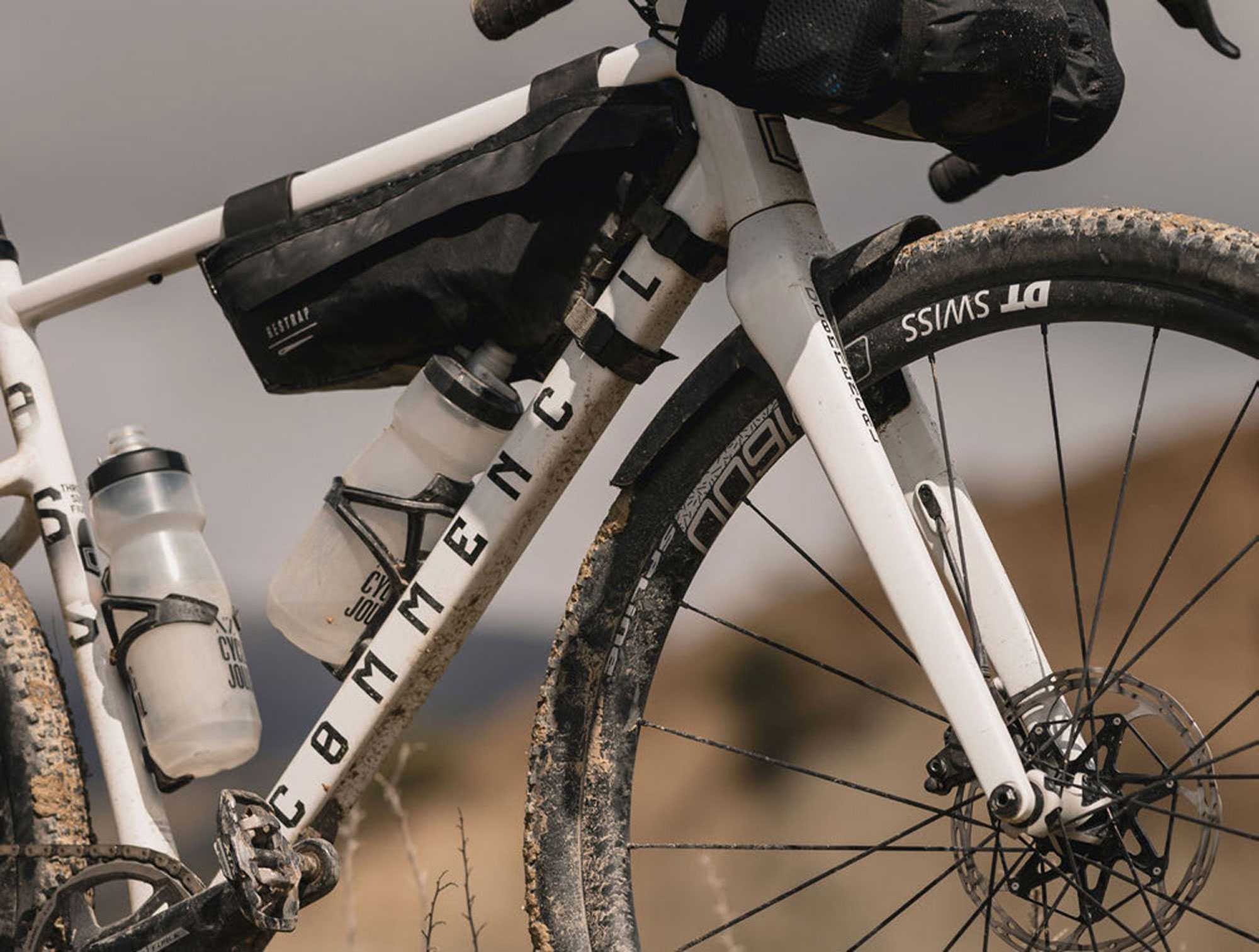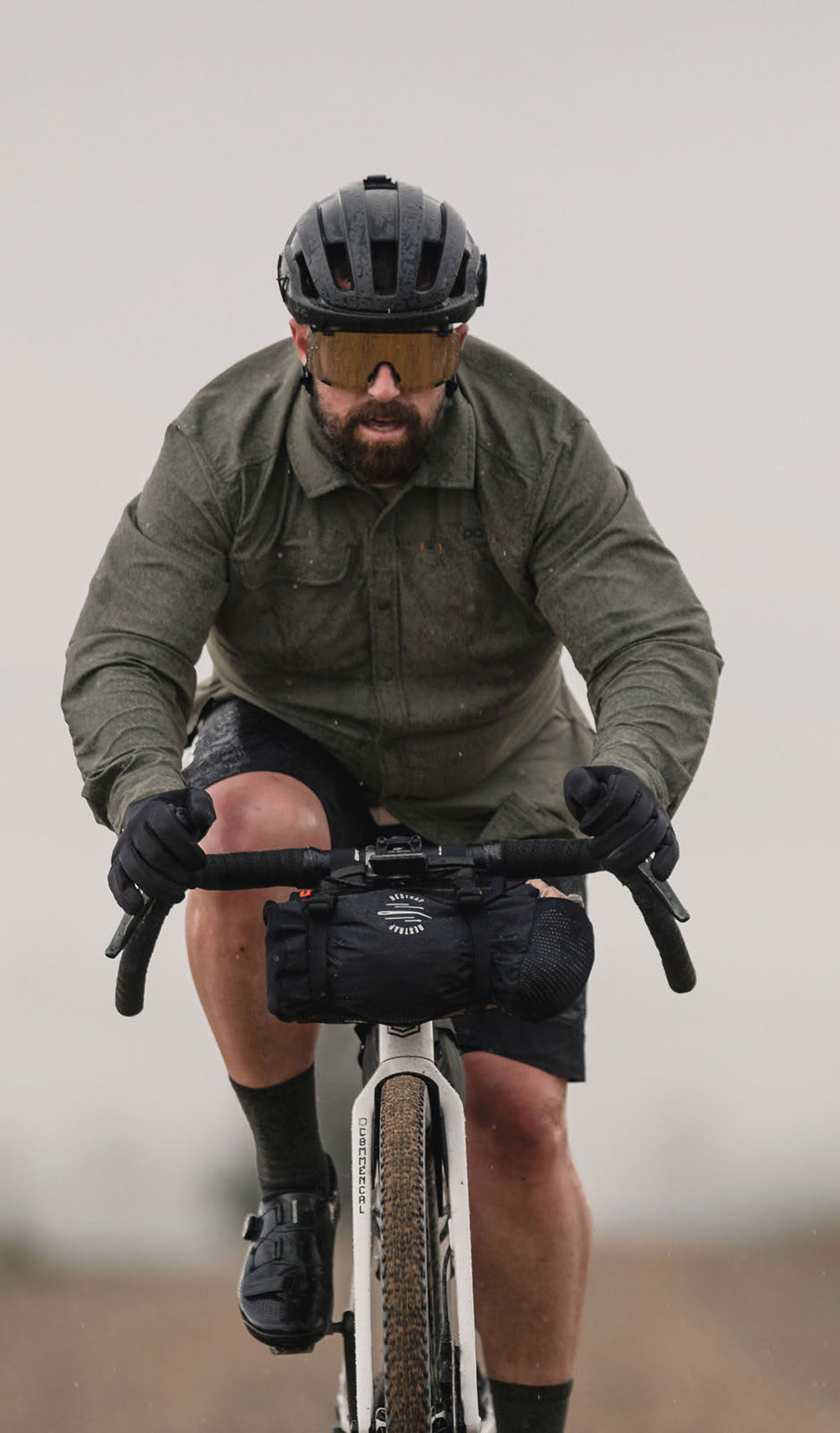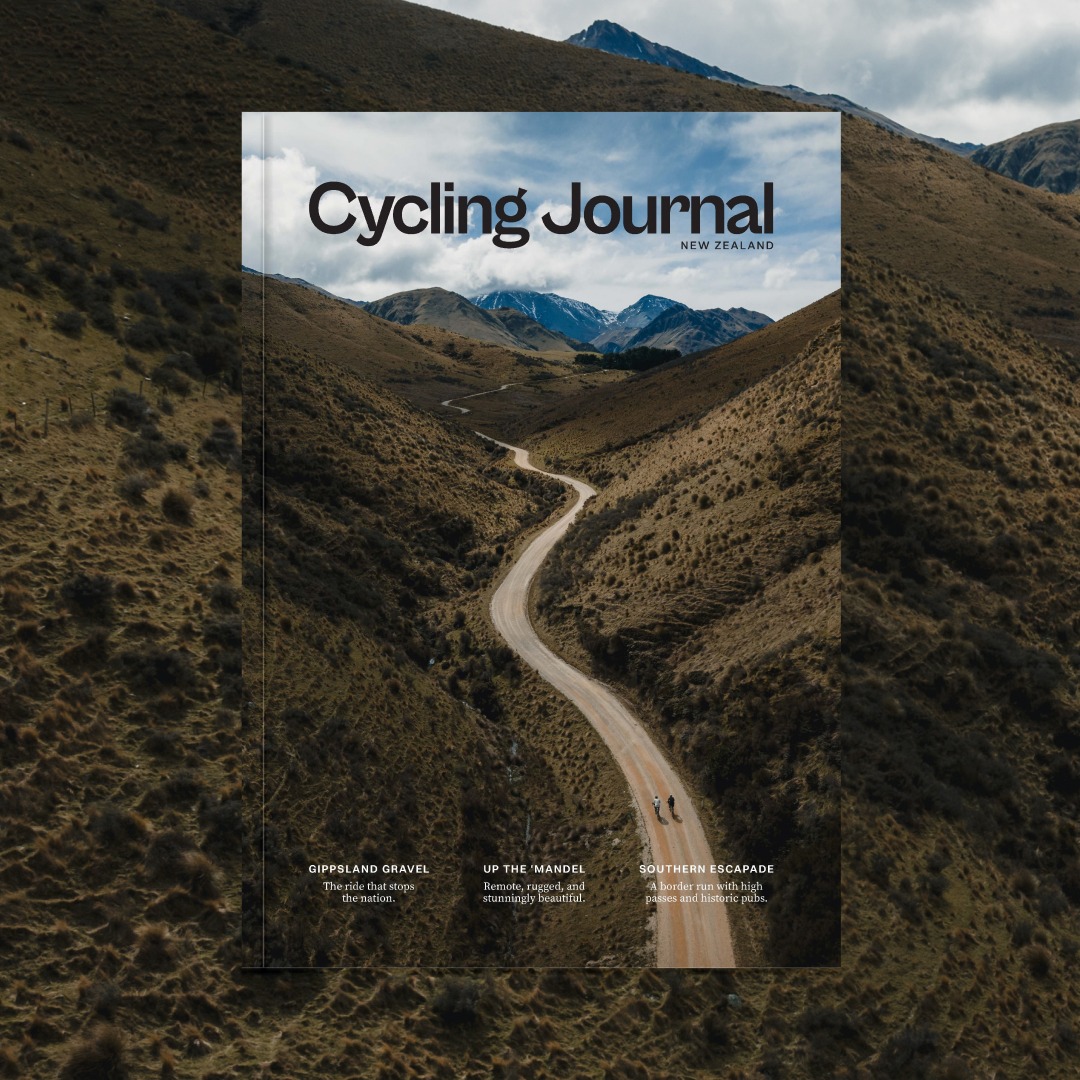Words Liam Friary
Images Cameron Mackenzie
RRP $269 Bar Bag | $184 Frame Bag
Distributor Everoutdoor
One early morning for Restrap founder, Nathan Hughes, and a late night for me, we connected via our computer screens. Our times zones weren’t in sync but our passion for cycling was. Nathan oozes enthusiasm for riding and it quickly became clear to me that he has a deep understanding of the bikepacking sub-culture.
In 2010, Nathan was a poor student who was into riding bikes, and needed some pedal straps. He decided to try to make some for himself out of old car seatbelts, and then ended up selling a few to his mates. Apparently, it was only supposed to be a stopgap before he figured out what he wanted to do with his life, but since then it has really evolved. Nowadays the company has over fifty employees, all based out of Leeds, England. These days, the company focuses more on bikepacking luggage products and other associated gear. What sets them apart is that, unlike many other companies, they make 95% of their products in-house. Their handmade approach is not easy to do nor maintain in this modern era, so hats off to them for keeping production on their own soil. The night creeps on for me, as Nathan is just starting about his day, but our conversation leads down the many different paths surrounding bikes and riding. It seems the products are brought to life because most of the employees are riders themselves. They’re often out doing bikepacking multi-day rides, Ultras and pretty much anything that involves a bike, which helps them think about what they need, and then turns into products. I think this nuance is not only needed but welcomed when it comes to very specific bikepacking products; only a rider really knows. I’ll dig more into this story in an upcoming issue but, for now, will give you a review of the Restrap products we used for The Southern Escapade, as featured in this issue.
There are flaps over the zips which help keep water from seeping into the bag through the zips – a neat feature. The fabrics are highly durable and, on this trip, they took a beating and didn’t show any signs of wear.
Race Bar Bag
Restrap’s Race Bar Bag, as the name suggests, is for light and swift adventures. It’s a harness and separate drybag design that attaches securely to your bike without affecting cable runs or steering. It opens from the top rather than the side, but does have mesh stash pockets on either side of the bag which come in handy! Perhaps the most important part – in our climate – is that it’s fully waterproof. It has decent 7L capacity, however, you’ll still need to consider what gear you want to pack in it. This product is aimed at fast-paced, lightweight bikepacking after all – and we’re not going to Timbuktu and back. It has been made with drop handlebars in mind, however, the bag also works on flat bars. Fully loaded, the drybag doesn’t take up a ton of room across the handlebars; I had 460mm bars, but it could easily fit 420mm handlebars, which is a great benefit as many bags won’t fit small drop bars. The other thing about it not taking up a tonne of real estate, is that you’re able to maneuver your hands into more positions – which is definitely needed for long days in the saddle. This is the reasoning behind the top closure rather than side, as it creates less length; side- roll bags have closures and buckles on each side which creates more length. I’ve used bags like this in the past and they can become annoying to get the right closure, and I tended to hit the buckles in the drops of gravel descents. I like that Restrap have used this approach on their Race Bar Bag.
The holster is made from a WX21 technical outer, with an inner lining made from nylon, with rubberised (Hypalon) accents that stop the drybag rotating, keeping the mesh pockets upright. Mounting is straightforward as it attaches with a spring-loaded cam buckle and there’s handy spacers, so the holster doesn’t sit directly against the bar. Back to the earlier point, this creates more room for your hands on the top of the handlebar. It also means there’s ample space for gear and brake cables/hoses, which doesn’t get affected by the bar bag. Plus, there’s a heap of room to run your head unit, front lights and other paraphernalia off the handlebars. To help keep the bag from bouncing there’s a bit of elastic cord that wraps around the head tube with a few foam spacers. I would advise placing some bike protective film on your headtube before putting the bags on, as they can scuff up the paint. On our three-day bikepacking journey I didn’t need to alter the bag one bit and the cables weren’t affected at all. I like fitting something and then forgetting about it – the mark of a good product.
For a ‘flashpacking’ or ‘fastpacking’ adventure, the 7L capacity is sufficient. On the trip I stuffed in a down jacket, beanie, Merino top, Merino longs, shirt, tee, bibs and a few pairs of socks – and there was still plenty of space left. I stashed ride food, long gloves and other easily accessible items in the side pockets and found them super easy to get at on-the-fly. I should note that the drybag straps aren’t adjustable – essentially there’s a cut-off to how much you can pack into it. I think this is a neat approach to minimising what you take on a trip, as often you end up taking too much. Again, the game is about riding as swiftly and as lightweight as possible. As I mentioned earlier, the drybag is fully waterproof, but it doesn’t hurt to stash items in their own drybags for an extra back up. This also helps when getting to your digs for the evening – having your off-bike kit in separate compartments means it’s a bit easier to grab what you need, rather than looking like you’re having a garage sale on the motel floor. I would state that, whilst the tapered drybag does compress, there’s always some items, like a down jacket, that want to expand. This system really relies on the holster to tighten things up. I had enough clearance between the top of my wheel and the bag, but some smaller and more aggressive frames may become a bit problematic. In any case, you can also cinch it up with some other straps before you put it into the holster, which will compress the bag before you load it. It’s a touch niggly to tighten the holster straps using two hands.
The bag did everything well for the three-day bikepacking escapade. Across demanding off-road terrain, the attachment didn’t experience any issues with swaying or bouncing. There wasn’t a need to adjust anything during the whole trip. After each day it was easy to remove the drybag from the holster for an overnight stay before repacking and reattaching in the morning. I liked that there’s two parts; drybag and holster, which makes things slicker when getting to and leaving your destination. It didn’t show any signs of wear and, after a few more uses since then, you can tell it’s a solid piece of kit. I’d say the price is on the higher side but you’re getting a quality product that will last and if it doesn’t there’s a lifetime warranty.
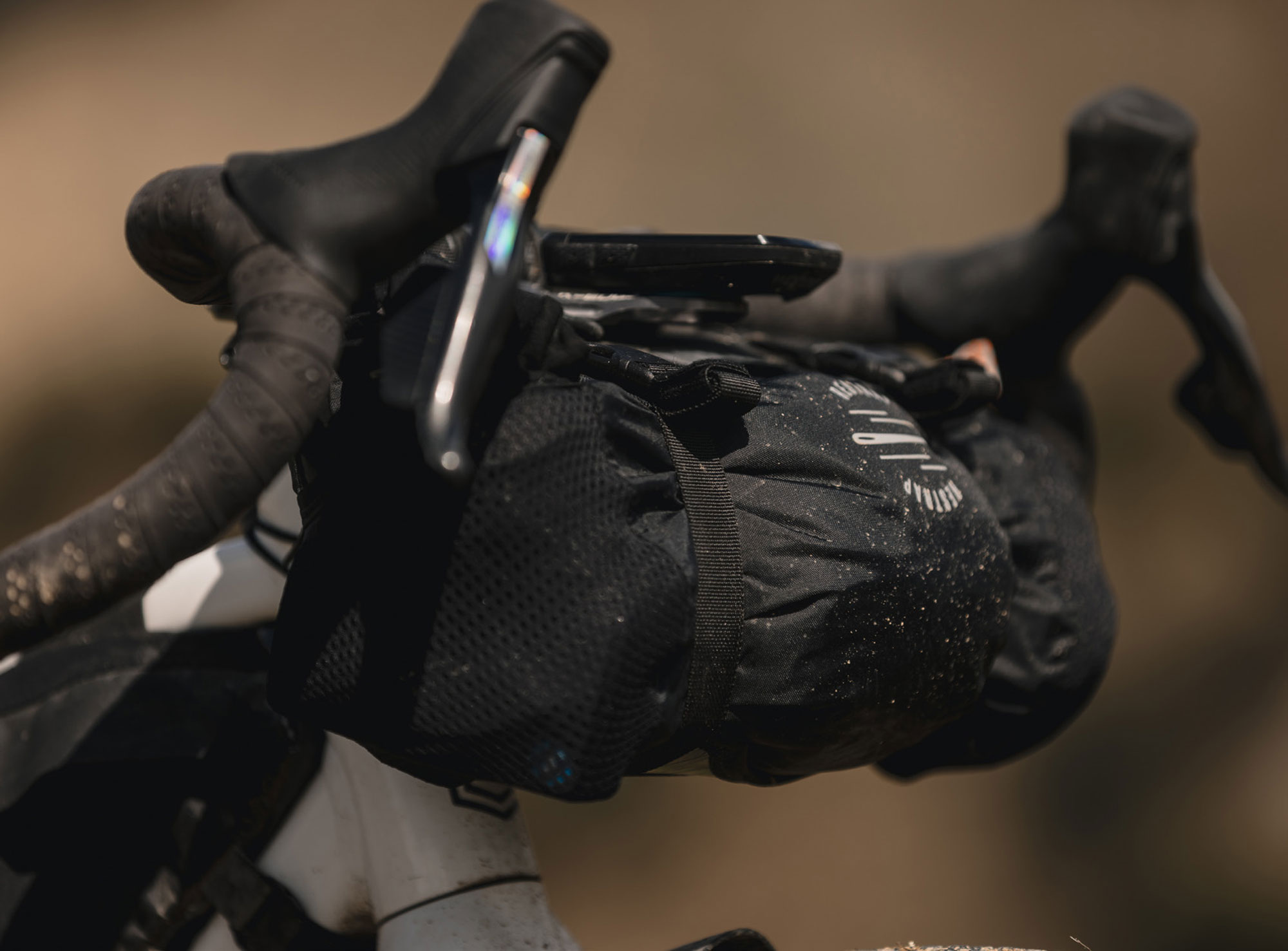
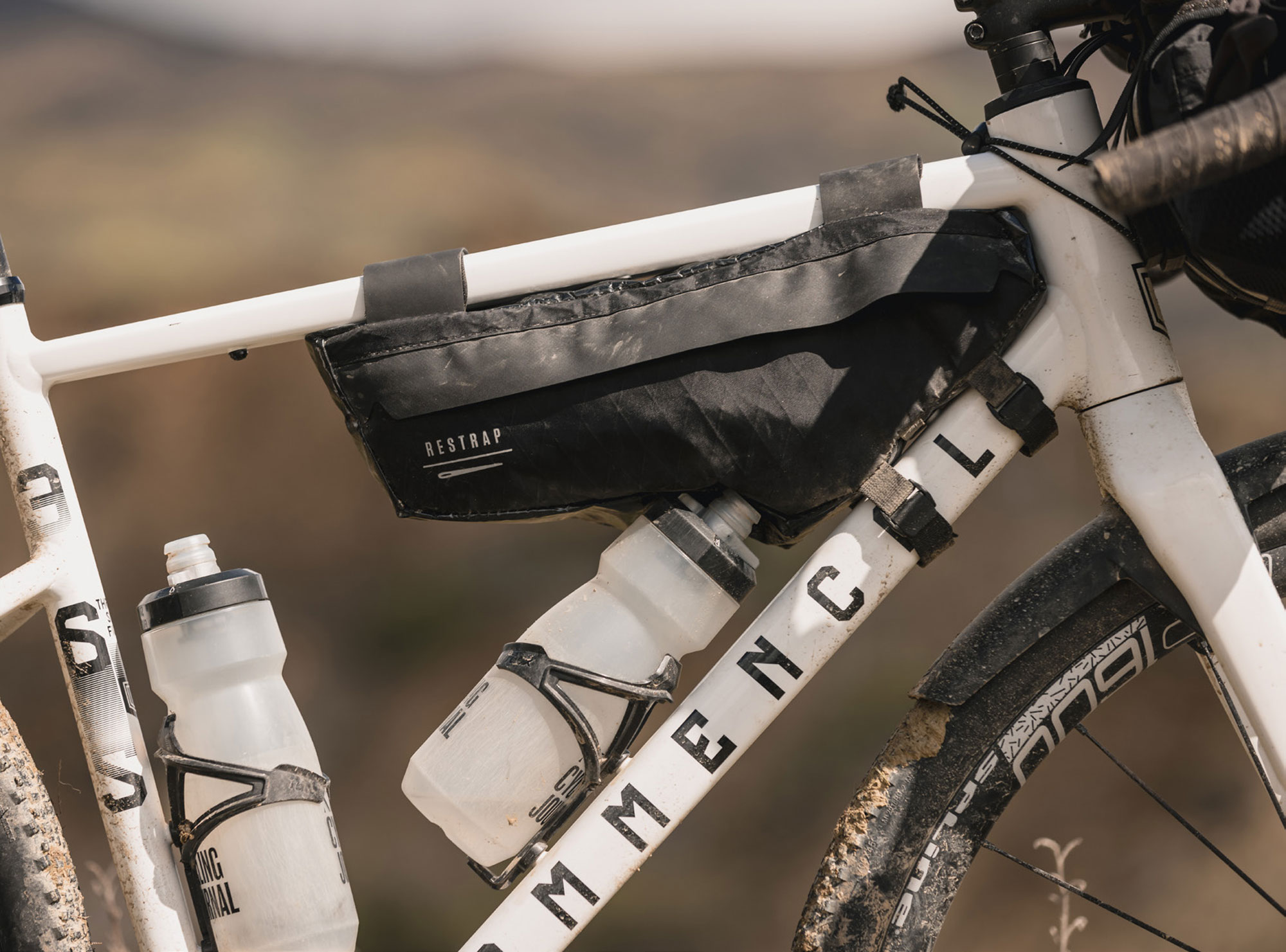
What sets them apart is that, unlike many other companies, they make 95% of their products in-house. Their handmade approach is not easy to do nor maintain in this modern era, so hats off to them for keeping production on their own soil.
Race Frame Bag – Small
Just like the Race Bar Bag the Race Frame Bag has decent waterproofing, is quality and carriers a fair amount of stuff which is all neatly packed into the bag. I should mention, Restrap offers its Race Frame Bag in either a small or large version; they’re much the same but as you would have guessed the large has more capacity, with a volume of 4.2L, whilst the small has a capacity of 3L. The small is a handy size for day ride essentials or in addition to other bags for swift journeys. Riders, in particular gravel riders, have ventured further afield in recent years and that means more stuff like repair kits and food, so a frame bag has become a staple.
For the three-day bikepacking trip, I stuffed in a few inner tubes, mini pump, multitool, CO2 canisters, patches, PLB, lightweight gilet, ride snacks and my phone – and there was still a bit of space left. I liked that inside there’s a partition in the main pocket that runs down the centre of the bag, and a couple of mesh pockets for keeping smaller things organised. The other side has a zip for slimmer stuff like a phone, credit cards or cash… if anyone still carries that these days?! It’s so annoying to have things rattling about when you’re getting bounced around on rough roads, so the internal pockets help with that. It also keeps your stuff in areas that are easy to access whilst on the move, which is super handy. I have been fatigued on many multi-day trips before and not being able to find what you need can be bloody frustrating!
Restrap has used a mixture of VX21 material and 1000D textured nylon to keep the elements out – this works well! There are flaps over the zips which help keep water from seeping into the bag through the zips – a neat feature. The fabrics are highly durable and, on this trip, they took a beating and didn’t show any signs of wear. Other nifty details are a hole at the front to direct cables through to reach things like power banks, light batteries – should you need light – or to charge things on- the-go. Putting them onto your frame is simple, using two wide Velcro tabs for the top tube and loop-through clips and straps for the down tube to ensure a secure fit. I should note, the two tabs used for the top tube don’t clash with the fixing points used on any of Restrap’s Bar Bag. It doesn’t take up a tonne of space either and I could easily access my bottles even without side loader cages.
It was a great addition to the Bar Bag for this trip and I didn’t need much more. It stored my essentials well and meant I stayed on top of my eating during these longer days in the saddle. Sometimes the zip would get a little caught when opening, but this was due to it being so tightly packed. It didn’t interfere with my knees during the pedal stroke, and it made things simple when stashing items needed for bikepacking jaunts or gravel day rides. Again, this is at a premium price point, but it’s a high-quality product which is handmade in the UK.
